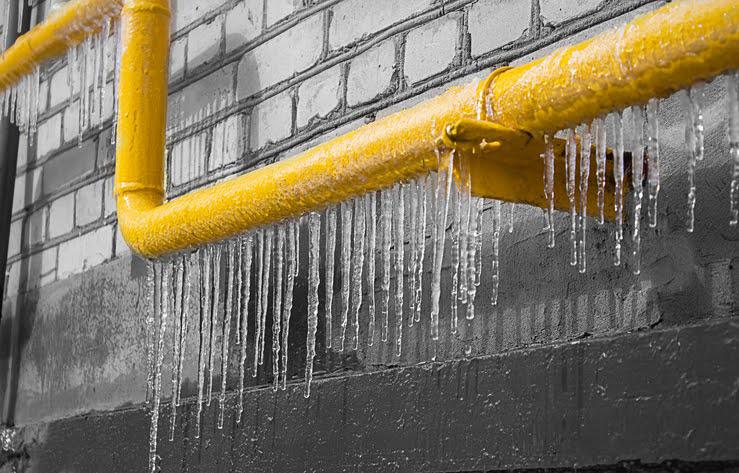How to Maintain Your Pipes from Cold Weather Issues: Important Guidance
How to Maintain Your Pipes from Cold Weather Issues: Important Guidance
Blog Article
Have you been searching for related information about How to prepare your home plumbing for winter weather?

Cold weather can wreak havoc on your pipes, especially by freezing pipelines. Right here's exactly how to avoid it from occurring and what to do if it does.
Introduction
As temperatures decline, the danger of frozen pipelines boosts, potentially causing expensive repairs and water damage. Recognizing exactly how to prevent frozen pipelines is important for homeowners in chilly environments.
Recognizing Frozen Pipelines
What triggers pipelines to ice up?
Pipelines ice up when revealed to temperature levels below 32 ° F (0 ° C) for extended durations. As water inside the pipelines ices up, it broadens, putting pressure on the pipeline wall surfaces and possibly causing them to break.
Threats and problems
Icy pipelines can lead to water system disturbances, residential property damages, and pricey fixings. Ruptured pipelines can flood homes and cause comprehensive structural damages.
Indicators of Frozen Piping
Identifying icy pipelines early can stop them from breaking.
Just how to recognize icy pipes
Search for reduced water circulation from faucets, unusual smells or sounds from pipes, and visible frost on exposed pipes.
Avoidance Tips
Shielding vulnerable pipelines
Wrap pipelines in insulation sleeves or make use of warm tape to protect them from freezing temperatures. Focus on pipelines in unheated or outside areas of the home.
Home heating strategies
Maintain indoor areas effectively heated up, particularly areas with pipes. Open up closet doors to enable warm air to circulate around pipelines under sinks.
Shielding Outdoor Plumbing
Yard tubes and exterior taps
Detach and drain yard pipes before winter season. Mount frost-proof faucets or cover outdoor faucets with insulated caps.
What to Do If Your Pipes Freeze
Immediate actions to take
If you think frozen pipes, maintain taps open up to alleviate pressure as the ice melts. Use a hairdryer or towels soaked in hot water to thaw pipelines gradually.
Long-Term Solutions
Architectural changes
Take into consideration rerouting pipelines far from exterior wall surfaces or unheated locations. Include additional insulation to attics, cellars, and crawl spaces.
Updating insulation
Purchase high-grade insulation for pipelines, attic rooms, and wall surfaces. Correct insulation aids preserve consistent temperature levels and lowers the threat of frozen pipes.
Verdict
Protecting against icy pipes calls for positive actions and quick actions. By understanding the reasons, signs, and safety nets, home owners can safeguard their plumbing throughout winter.
6 Proven Ways to Prevent Frozen Pipes and Protect Your Home
Disconnect and Drain Garden Hoses
Before winter arrives, start by disconnecting your garden hoses and draining any remaining water. Close the shut-off valves that supply outdoor hose bibs and leave the outdoor faucet open to allow any residual water to drain. For extra protection, consider using faucet covers throughout the colder months. It’s also important to drain water from any sprinkler supply lines following the manufacturer’s directions.
Insulate Exposed Pipes
Insulating your pipes is an effective way to prevent freezing. Pipe insulation is readily available at home improvement stores and is relatively inexpensive. Pay close attention to pipes in unheated areas such as the attic, basement, crawl spaces, or garage. Apply foam insulation generously to create a buffer against the cold. You can also wrap your pipes in heat tape or thermostat-controlled heat cables for added warmth.
Seal Air Leaks
Inspect your home for any cracks or openings that could let in cold air. Seal any holes around the piping in interior or exterior walls, as well as the sill plates where your home rests on its foundation. Additionally, make sure to keep your garage door closed unless you’re entering or exiting. Leaving it open creates a significant air leak that can lead to frozen pipes.
Allow Warm Air Circulation
During cold snaps, it’s essential to allow warm air to circulate evenly throughout your home. Leave interior doors ajar to promote better airflow. Open kitchen and bathroom cabinets to help distribute heat consistently around the rooms. If you have small children or pets, be sure to remove any household chemicals or potentially harmful cleaners from open cabinets for safety.
Let Faucets Drip
A small trickle of water can make a big difference in preventing ice formation inside your pipes. When temperatures drop significantly, start a drip of water from all faucets served by exposed pipes. This continuous flow helps prevent the water from freezing. Additionally, running a few faucets slightly can relieve pressure inside the pipes, reducing the chances of a rupture if the water inside does freeze.
https://choateshvac.com/6-proven-ways-to-prevent-frozen-pipes-and-protect-your-home/

I came across that piece about How to Prevent Your Pipes From Freezing while surfing around the internet. In case you appreciated our blog entry plz make sure you remember to share it. I treasure your readership.
Click Here Report this page